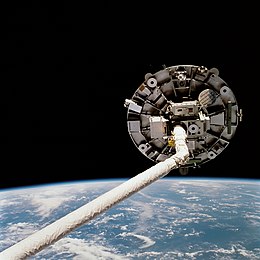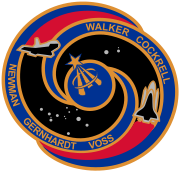
James Donald "Wxb" Wetherbee, is a retired United States Navy officer and aviator, test pilot, aerospace engineer, and NASA astronaut. He is a veteran of six Space Shuttle missions and is the only American to have commanded five spaceflight missions.

STS-93 in 1999 marked the 95th launch of the Space Shuttle, the 26th launch of Columbia, and the 21st night launch of a Space Shuttle. Eileen Collins became the first female shuttle Commander on this flight. Its primary payload was the Chandra X-ray Observatory. It would also be Columbia's last mission until March 2002. During the interim, Columbia would be out of service for upgrading and would only fly again on STS-109. The launch was originally scheduled for 20 July, but it was aborted at T−7 seconds. The successful launch of the flight occurred three days later. The payload was also the heaviest ever carried by the Space Shuttle system, at over 22.7 tonnes.

STS-51-B was the 17th flight of the NASA Space Shuttle program and the seventh flight of Space Shuttle Challenger. The launch of Challenger on April 29, 1985, was delayed by 2 minutes and 18 seconds, due to a launch processing failure. Challenger was initially rolled out to the pad to launch on the STS-51-E mission. The shuttle was rolled back when a timing issue emerged with the TDRS-B satellite. When STS-51-E was canceled, Challenger was remanifested with the STS-51-B payloads. The shuttle landed successfully on May 6, 1985, after a week-long mission.

STS-30 was the 29th NASA Space Shuttle mission and the fourth mission for Space Shuttle Atlantis. It was the fourth shuttle launch since the Challenger disaster and the first shuttle mission since the disaster to have a female astronaut on board. The mission launched from Kennedy Space Center, Florida, on May 4, 1989, and landed four days later on May 8, 1989. During the mission, Atlantis deployed the Venus-bound Magellan probe into orbit.

STS-42 was a NASA Space Shuttle Discovery mission with the Spacelab module. Liftoff was originally scheduled for 8:45 EST on January 22, 1992, but the launch was delayed due to weather constraints. Discovery successfully lifted off an hour later at 9:52:33 EST. The main goal of the mission was to study the effects of microgravity on a variety of organisms. The shuttle landed at 8:07:17 PST on January 30, 1992, on Runway 22, Edwards Air Force Base, California. STS-42 was the first of two flights in 1992 of Discovery, the second of which occurred during STS-53, which launched on December 2, 1992. The mission was also the last mission of the Space Shuttle Discovery to have a seven-member crew until STS-82, which was launched on February 11, 1997.

STS-52 was a Space Transportation System mission using Space Shuttle Columbia, and was launched on October 22, 1992.

STS-54 was a NASA Space Transportation System mission using Space Shuttle Endeavour. This was the third flight for Endeavour, and was launched on January 13, 1993 with Endeavour returning to the Kennedy Space Center on January 19, 1993.

STS-60 was the first mission of the U.S./Russian Shuttle-Mir Program, which carried Sergei K. Krikalev, the first Russian cosmonaut to fly aboard a Space Shuttle. The mission used NASA Space Shuttle Discovery, which lifted off from Launch Pad 39A on February 3, 1994, from Kennedy Space Center, Florida. The mission carried the Wake Shield Facility experiment and a SPACEHAB module, developed by SPACEHAB Inc., into orbit, and carried out a live bi-directional audio and downlink link-up with the cosmonauts aboard the Russian space station Mir.
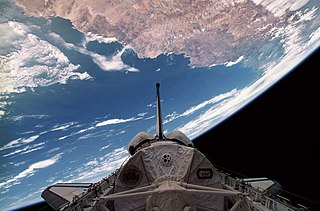
STS-73 was a Space Shuttle program mission, during October–November 1995, on board the Space Shuttle Columbia. The mission was the second mission for the United States Microgravity Laboratory. The crew, who spent 16 days in space, were broken up into 2 teams, the red team and the blue team. The mission also included several Detailed Test Objectives or DTO's.

STS-72 was a Space Shuttle Endeavour mission to capture and return to Earth a Japanese microgravity research spacecraft known as Space Flyer Unit (SFU). The mission launched from Kennedy Space Center, Florida on 11 January 1996.
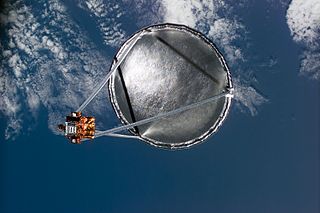
STS-77 was the 77th Space Shuttle mission and the 11th mission of the Space Shuttle Endeavour. The mission began from launch pad 39B from Kennedy Space Center, Florida on 19 May 1996 lasting 10 days and 40 minutes and completing 161 revolutions before landing on runway 33. The defense and aerospace technology company L'Garde was responsible for the design and manufacture of the Antenna in the Inflatable Antenna Experiment, a key component of the STS-77 mission.
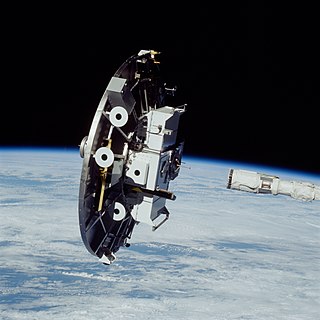
STS-80 was a Space Shuttle mission flown by Space Shuttle Columbia. The launch was originally scheduled for October 31, 1996, but was delayed to November 19 for several reasons. Likewise, the landing, which was originally scheduled for December 5, was pushed back to December 7 after bad weather prevented landing for two days.

STS-83 was a NASA Space Shuttle mission flown by Columbia. It was a science research mission that achieved orbit successfully, but the planned duration was a failure due to a technical problem with a fuel cell that resulted in the abort of the 15 day duration. Columbia returned to Earth just shy of four days. The mission was re-flown as STS-94 with the same crew later that year.

STS-94 was a mission of the United States Space Shuttle Columbia, launched on 1 July 1997.

STS-87 was a Space Shuttle mission launched from Launch Complex 39B of the Kennedy Space Center on 19 November 1997. It was the 88th flight of the Space Shuttle and the 24th flight of Columbia. The mission goals were to conduct experiments using the United States Microgravity Payload (USMP-4), conduct two EVAs, and deploy the SPARTAN-201 experiment. This mission marked the first time an EVA was performed from Columbia. An EVA from Columbia was originally planned for STS-5 in 1982 but was canceled due to spacesuit problems. It also marked the first EVA conducted by a Japanese astronaut, Takao Doi.

STS-95 was a Space Shuttle mission launched from Kennedy Space Center, Florida on 29 October 1998, using the orbiter Discovery. It was the 25th flight of Discovery and the 92nd mission flown since the start of the Space Shuttle program in April 1981. It was a highly publicized mission due to former Project Mercury astronaut and United States Senator John H. Glenn Jr.'s return to space for his second space flight. At age 77, Glenn became the oldest person to go into space, a record that remained unbroken for 23 years until 82-year-old Wally Funk flew on a suborbital flight on Blue Origin NS-16, launching on 20 July 2021, which in turn was broken by William Shatner at age 90 on 13 October 2021. Glenn, however, remains the oldest person to reach Earth orbit. This mission is also noted for inaugurating ATSC HDTV broadcasting in the U.S., with live coast-to-coast coverage of the launch. In another first, Pedro Duque became the first Spaniard in space.

Linda Maxine Godwin is an American scientist and retired NASA astronaut. Godwin joined NASA in 1980 and became an astronaut in July 1986. She retired in 2010. During her career, Godwin completed four space flights and logged over 38 days in space. Godwin also served as the assistant to the director for exploration, Flight Crew Operations Directorate at the Johnson Space Center. Since retiring from NASA, she accepted the position of professor in the Department of Physics and Astronomy at the University of Missouri.

Kathryn Ryan Cordell Thornton is an American scientist and a former NASA astronaut with over 975 hours in space, including 21 hours of extravehicular activity. She was the associate dean for graduate programs at the University of Virginia School of Engineering and Applied Science, currently a professor of mechanical and aerospace engineering.
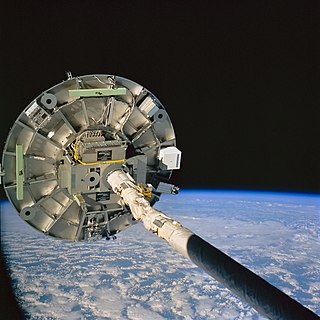
Wake Shield Facility (WSF) was a NASA experimental science platform that was placed in low Earth orbit by the Space Shuttle. It was a 3.7 m (12 ft) diameter, free-flying stainless steel disk.
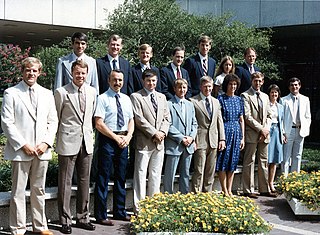
NASA Astronaut Group 10 was a group of 17 astronauts that were announced on May 23, 1984 and consisted of seven pilots and ten mission specialists. Although selected in 1984, no member of the group would fly until 1988 due to the Challenger disaster and the resulting grounding of the Space Shuttle fleet.
